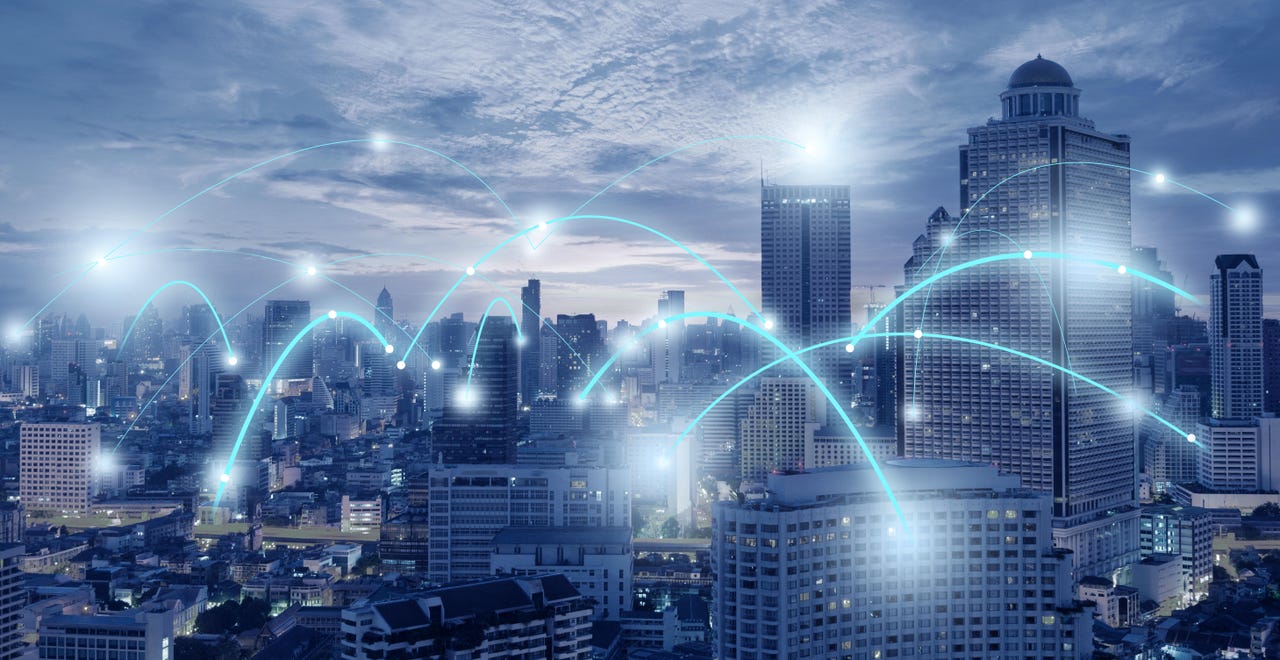The need for an all-optical network
A mind-boggling number of smart devices and sensors are connecting to the internet through cloud-based data centres across the world at a pace unseen before.

Already, Internet of Things (IoT) sensors have surpassed 1 billion connections globally, according to research firm Ovum. Currently, these use mostly 2G, 3G, as well as 4G connections, though 5G is on the way to enable even more connections in the years ahead.
Then there are wearables, smartphones, and laptops users carry with them that connect to the internet as well. Increasingly, they will require more bandwidth as new interfaces such as virtual reality (VR) become commonly available.
This data that serves a burgeoning digital global economy has also fuelled a growing number of data centres. The Asia-Pacific data centre market is growing by 7.6% from 2019 to 2023, according to GlobalData.
In this truly data-driven world, fast and reliable connectivity ceases to be a luxury -- it has become a must.
Unfortunately, much of today's infrastructure used by internet service providers (ISPs) will struggle to deliver the expected results in the years ahead. It needs to be revamped drastically for a world where everything connects to everywhere.
The key issue is the mixture of copper and optical links and switches in today's setup. Whether this is in the copper cable connecting data centre equipment or the copper link hooking up a home to an ISP's broadband service, today's infrastructure will be a step behind some of the most important innovations to emerge.
For example, even if a 5G connection is mighty fast in connecting a user to an online service, such as a VR learning simulation, the data centre where the information resides still has to keep up. After all, the weakest link is the slowest link.
The future beckons
Despite copper having a long history in communications, the time may have come for an all-optical network.
ISPs looking to future expansion have to think of optical switches and interconnects. Data centres have to turn to optical links instead of old, copper-based, electronic switches. Long-distance links between ISPs and users have to be optical connections.
For starters, an optical link is much faster and covers longer distances. Using pulses of light generated by small lasers or light-emitting diodes, it does not require electricity to carry communication signals.
It also runs on a wide bandwidth of 100Gbps over 40km, besting the maximum of 1Gbps over 100m that copper wires offer. Plus, it is not susceptible to magnetic interference or corrosion.
Just as importantly, optical infrastructure offers extremely low latency, at just 10 microseconds, which is needed for future applications. This near zero-lag feature makes it ideal for low-latency 5G applications, such as VR, remote surgery, or autonomous vehicles.
For ISPs, all-optical infrastructure is also environmentally friendly. Optical fibre uses 30% less power and can reduce carbon footprints by 50% by using passive devices instead of active ones.
Being small and light, with each optical fibre only slightly thicker than a strand of hair, optical links also help to reduce costs involved in transportation. The same can be said of costs involved in laying fibre optic cables underground -- they are simply less bulky and cumbersome to handle.
Ready for the long term
Optical fibre is simply the answer to the next generation of internet. Going fully opticalenables ISPs to both meet network evolution requirements and provide sufficient bandwidth for new services for the next 30 years, as the International Telecommunication Union suggests.
While retaining copper in parts of the network may help save costs in the short term, its deficiencies will eventually be laid bare as more data flows through the network in the years ahead.
Conversely, the case for optical links has never been in question. Now, its adoption will be further boosted by the unprecedented explosion of data that is being witnessed now, along with fast maturing standards in the technology.
What does this mean for ISPs? A cloud-based data centre architecture and intelligent and diversified internet services will become the norm in the next 10 years. If ISPs are to be part of this equation, they have to transform their networks faster to meet the growing demand.
Today's customers have become used to having a great experience online, whether they are ordering takeout, watching a streaming video, or connecting to the office remotely. The future brings more challenges, with expectations of even faster download speed, lower latency, and higher bandwidth.
Don't forget that getting a fully optical setup can take time. The upgrade cannot be done overnight, yet it takes only a single bad experience for a customer to switch service providers, moving to one that has been preparing for the new, intelligent Internet. For ISPs, the future is clearly optical which means it pays to look ahead early.
Huawei aims to build a fully optical, intelligent internet, by providing end-to-end solutions to meet user needs. Speak to a Huawei representative to find out more.